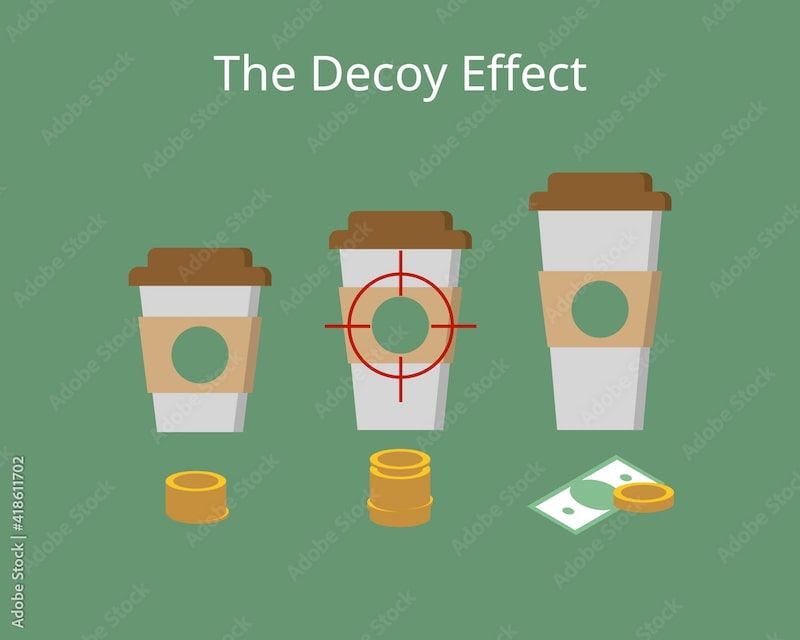
10 Tips To Increase Your Average Order Value On Shopify
Table of Contents
- 1. Understand Your Customers
- 2. Upselling
- 3. Cross-selling
- 4. After Checkout Offer
- 5. Offer a Discount
- 6. The “It’s A Steal!” Decoy
- 7. The “frequently bought together”
- 8. Offering free shipping on orders of over X value
- 9. Offering a coupon on orders of over X value
- 10. Offering low monthly payments on orders of over X value
We all want our Shopify stores to sell more, but that doesn’t necessarily mean more individual purchases. Increasing your average order value will help you sell more and if done correctly, offering your customers an overall better experience.
1. Understand Your Customers

Selling is all about understanding your customers. It doesn’t matter whether you’re trying to upsell or cross-sell, knowing what your customers are like is always going to get you the best results.
Having a better understanding of why your customers are buying something can help you figure out other things they may be looking for, or need without knowing they should be looking for them.
So try to find ways to better understand your customers and use those insights to figure out which products you can offer to your customers that they’re likely already looking for based on their purchase.
Remember, if there’s one thing we are, is predictable. So use that predictability in your favor.
2. Upselling

Upselling is a concept that we’re all familiar with regardless of whether we know it or not. It’s the supersize me strategy or the “do you want fries with that?”
Basically, you’re using your customer’s purchase as a relevant data point to try and figure out something that works together well or is an add-on to what they’re purchasing. It’s generally considered as offering an upgrade.
And this is a great way to try and increase your average order value. You see, if you do this correctly your customers will experience something altogether different: options. To them, you’re offering them options.
Take Apple, for example, when you go to their site and select a product, you’ve got the option to add storage, the option to add more ram, etc. Each one of these upgrades is essentially upselling. And, of course, if you’re purchasing a product you’re interested in knowing what your options are.
Upselling can be a great way of letting your customers know which other options are out there.
3. Cross-selling

Cross-selling is very similar to upselling, the main difference being that what you’re offering can be tangentially related or seemingly unrelated to their current purchase.
Why do I say seemingly unrelated? Because we’re going back to the “we’re predictable” part of the puzzle. Even among seemingly unrelated things, there are patterns. And sometimes that pattern is that for whatever reason beyond our comprehension two or more products are frequently being bought together.
It may be a whimsical decision.
When a customer makes a purchase, even if you can’t figure out a product that you can offer them that would make sense with their current purchase, be sure to offer them something. Maybe they’re on a roll. Let them be on a roll.
Don’t miss out on the opportunity of offering them the chance to buy something else. It’s good practice.
4. After Checkout Offer

Your instincts may tell you the best moment to offer your customer the chance to add something to their cart is… well, at the checkout — meaning before they’ve made the purchase.
However, there’s a good reason why you may want to wait until after checkout.
I know, it sounds strange but bear with us.
The idea goes as follows: if you offer your customer something immediately after they’ve completed a purchase you’ve got something on your side, they’ve already trusted you with their preferred payment method information.
So the idea is that you no longer need to work on building enough trust for them to click the button, they’ve already done it. You’re only telling them “this is also here if you want it, it’s easy, it’s one simple click away…”
If you want to know more about the After Checkout Upsell check out eCommerce Fastlane’s Why Upsells AFTER Checkout On Shopify Will Be Your Highest Converting Click.
5. Offer a Discount

Anytime you learn a new trick you have to try it out in combination with previously known tricks. So once you’ve figured out what you want to upsell or cross-sell when a customer purchases any particular product, why not try to offer a discount to boost your conversion rate?
It doesn’t have to be a huge discount. Customers are usually persuaded by even small discounts because they feel that they’re missing out if they don’t take it.
So you can offer a product at a discount, as a limited-time offer, to a customer who’s recently made a purchase.
Making it a limited-time offer also adds to it a sense of urgency.
6. The “It’s A Steal!” Decoy

Using a decoy is considered by some to be “cheap” but we’re not here to judge marketing strategies we’re here to figure out what works for our stores and use that. And in that spirit, we’re gonna look at the “It’s A Steal” decoy.
Here’s how it works: your customer is considering purchasing your product or service, but they’re looking at the most basic package and you’d rather they look at a higher-priced option.
So how do you go about it?
You want to show them a higher priced option to the one they’re looking at but you don’t want them to think “that’s expensive” so you give them an even higher reference of an even more comprehensive package.
Something perhaps packaged as premium, that some of your customers may opt for but you know that the majority of them will just turn to look at the reasonably priced middle-tier package and think “compared to that, this is a steal”.
And so you’ve done your job right. See, this isn’t designed to try to upsell your customers to your higher-tier package but to upsell them from your lower-tier package to a middle-tier one. And to do that you have to show them the higher-tier one too. All you’re doing is giving your customers a reference to work with.
To figure out the best and most effective way to do this you’re probably going to need to try a couple of times and run some tests in order to optimize.
7. The “frequently bought together”

We’ve all seen this one in action. Amazon quite famously and effectively does this all the time.
What makes it so effective? Data. Amazon is a huge store that has incredible amounts of data and they can use that to figure out stuff we could only dream of.
Alright. I don’t have Amazon’s data, therefore I can’t use this strategy. WRONG.
You can and you should.
Granted, you won’t have Amazon’s amazing sea of data to find hidden connections among “unrelated” products that are somehow frequently bought together, that’s true.
But whatever data you have is good. And you don’t have to take a dive into your data and try to figure it out all by yourself, there’s an app literally called “Frequently Bought Together” on Shopify’s app store, check it out.
Plus, if you don’t have frequently bought together items, you can still select products to advertise as such.
If you’re going to be doing that simply think about which products you want to boost.
8. Offering free shipping on orders of over X value

Another way to increase your average order value is to offer your customers free shipping on orders of above X value.
The trick here is to come up with a number that works for you but that will also be enticing for your customers. Because if you set that value to be too high, it’s not gonna be an effective strategy to persuade your customers to purchase more.
You need to find your own magic number. It’s different for everybody because there are a lot of variables at play here, so we can’t really give you a one size fits all solution.
What we can tell you is that we’re pretty sure you’ve been in that position; considering adding something to your purchase in order to get free shipping, because nobody likes to pay for shipping. It’s hardwired in our brains or something.
9. Offering a coupon on orders of over X value

Much like the previous point, offering a coupon on orders of over X value can be an effective way to do this. Some stores do this by telling you they’ll discount X dollars for every 100 you spend or something like that. What they’re doing there is making customers who are short of a 100 think about whether they’re missing out by not purchasing more.
The beauty of this model is that it works if you’re above a hundred too, as long as you’re closer to 200 than you are to 100.
I’m using 100 as an example it can work with 50, 20, any number. The number is not what’s important. What you need to be focusing on is the dynamic: the more you spend the higher your discount will be… by the way, you’re close to the next discount, are you sure you wanna leave it at that?
10. Offering low monthly payments on orders of over X value

This is the type of offer you usually only see from big stores that have a good and established relationship with certain banks and stuff but it’s still worth mentioning because it works.
Offering your customers flexible payment plans makes a world of difference.
You know… a lot of people often criticize someone when they’re struggling financially but they’ve got a really good phone, but there’s a reason that happens. Phones are a few of the things we can get for low monthly payments, even if you’ve got bad credit. So you don’t really need to have a lot of money to spend a lot of money on a phone.
If you can figure out a way to offer that same flexibility to your customers, your sales are going to go through the roof. Trust us on that.
We hope we answered most of your questions and if you've got any remaining questions be sure to contact us, we'd love to hear from you.

Get started for free
All-in-one review management solution for Shopify stores looking to build trust and increase conversions.
Opinew Blog Newsletter
Join the newsletter to receive the latest updates in your inbox.






